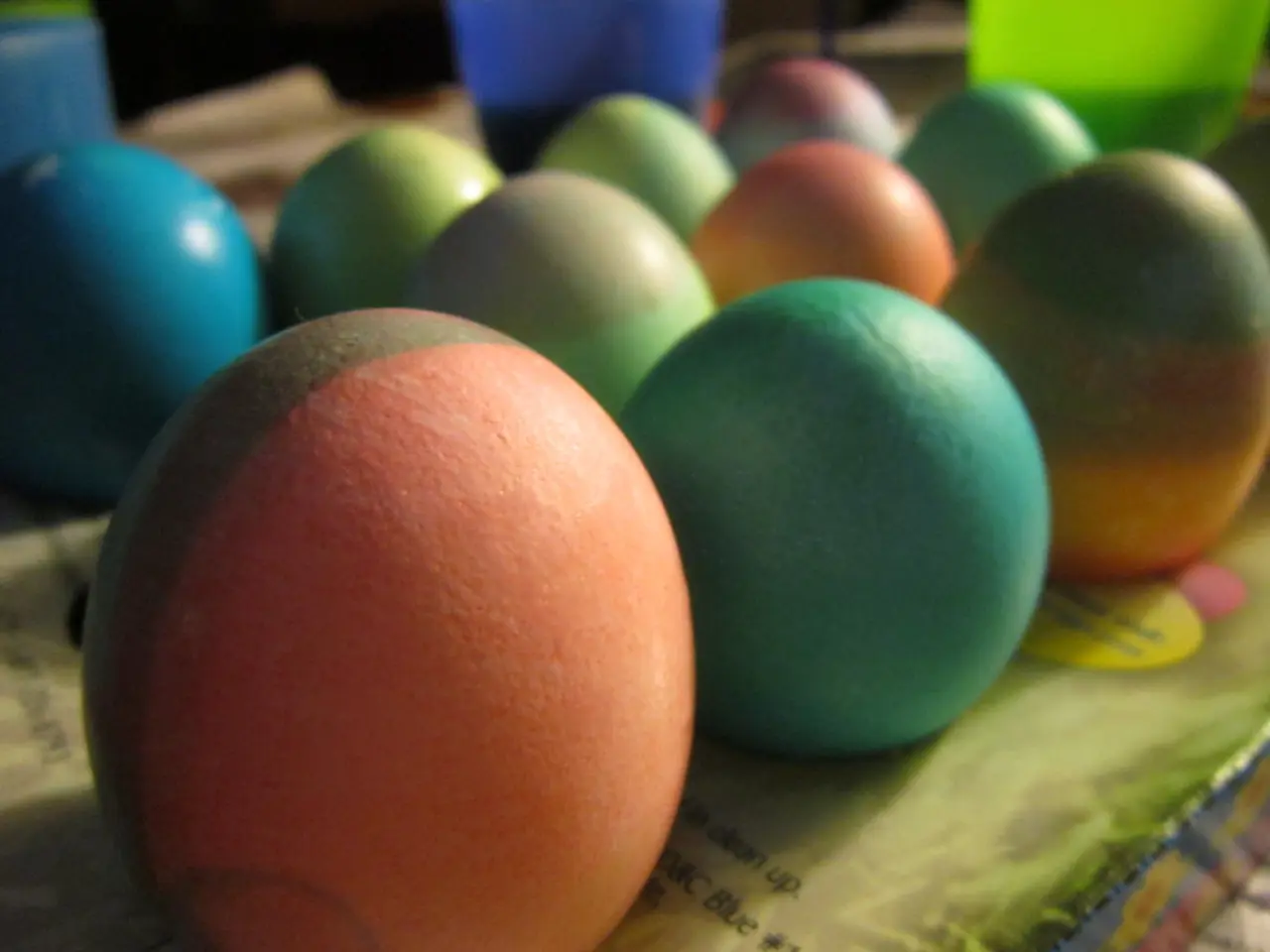Unconventional Concepts in Science: A Look at Humpty Dumpty Theories
=====================================================================
In a world where science meets nursery rhymes, children and adults alike can embark on a journey of discovery and learning. Here are some exciting experiments inspired by the tale of Humpty Dumpty that cater to various age groups.
For the younger ones, building a wall for Humpty Dumpty can be a fun and educational activity. By rolling a marble towards the figurine while ensuring each wall is the same size and using the same marble and amount of force, children can learn about symmetry and consistency. If you're looking for more nursery rhyme crafts, Red Ted Art offers an extensive selection to keep your little ones engaged.
As for testing the strength of Humpty Dumpty, why not create a competition? Stick a cardboard Humpty Dumpty to a wall using different materials like blu tack or velcro, and observe which holds him in place most securely. This simple experiment can help children understand the properties of different adhesives.
For older children interested in designing their own scientific experiments, advanced variations of the classic egg drop experiment provide rich opportunities to practice scientific procedures such as hypothesis formation, variable control, data collection, and analysis. One notable example is the Humpty Dumpty egg drop challenge, where students design and test different protective devices or materials to prevent an egg from breaking when dropped from a height.
Older children can deepen the inquiry by formulating hypotheses about which materials or designs best protect the egg and why. They can plan controlled experiments that systematically vary one factor at a time, measure quantitative outcomes, use multiple trials to obtain reliable data, and analyse results to draw conclusions about the principles of impact absorption, energy transfer, and material properties.
Additional related experiments or science challenges for older kids inspired by this theme include building a giant catapult to launch lightweight projectiles, investigating crystallization processes, and designing spring deflection measurements or exploring light refraction. These activities encourage older children to engage with all components of the scientific method in a hands-on and creative context modeled on the Humpty Dumpty story.
Lastly, let's not forget Incy Wincy Spider. One can create an umbrella for the spider and test its effectiveness in keeping the spider dry. This experiment can help children understand the principles of water resistance and the importance of design in keeping things dry.
These experiments are a fun and engaging way to learn about science while keeping the spirit of nursery rhymes alive. So, grab your materials, and let's get ready to roll, drop, launch, and spin!
This article was last updated on July 8, 2025, by Emma Vanstone.
References:
[1] Science Buddies. (n.d.). Humpty Dumpty Egg Drop Challenge. Retrieved from https://www.sciencebuddies.org/science-fair-projects/project_ideas/Humpty_p025/physics/humpty-dumpty-egg-drop-challenge
[2] Science Bob. (n.d.). How to Make an Umbrella for Incy Wincy Spider. Retrieved from https://www.sciencebob.com/projects/umbrella-for-incy-wincy-spider
[3] Science Bob. (n.d.). Crystals in a Jar. Retrieved from https://www.sciencebob.com/projects/crystals-in-a-jar
[4] Science Bob. (n.d.). Spring Deflection. Retrieved from https://www.sciencebob.com/projects/spring-deflection
- By incorporating science into traditional nursery rhymes, kids can engage in revolutionary activities like building walls, testing adhesives, designing egg drop devices, and creating umbrellas for learning purposes.
- The Humpty Dumpty egg drop challenge is an advanced experiment that encourages older children to implement scientific procedures such as hypothesis formation, variable control, data collection, and analysis.
- Children can deepen their understanding by formulating hypotheses about which materials or designs best protect the egg and why, planning controlled experiments to draw conclusions about principles like impact absorption, energy transfer, and material properties.
- In addition to the Humpty Dumpty egg drop challenge, other related activities for older kids inspired by this theme include exploring crystallization processes, designing spring deflection measurements, and investigating light refraction.
- The Incy Wincy Spider experiment involves creating an umbrella for the spider and testing its effectiveness in keeping the spider dry, helping kids learn about the principles of water resistance and the importance of design in keeping things dry.




